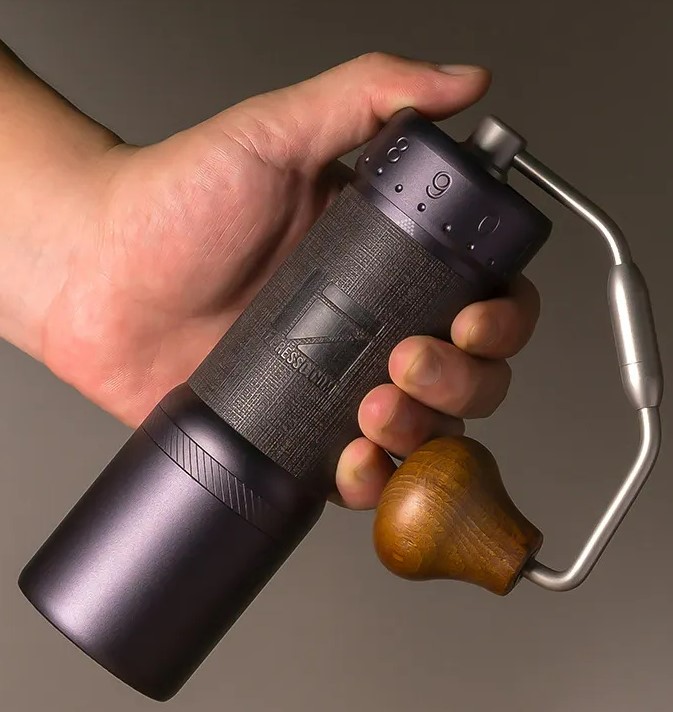Accuracy in Every Work: Discover the 1Zpresso J-Ultra Coffee Mill
Accuracy in Every Work: Discover the 1Zpresso J-Ultra Coffee Mill
Blog Article
Master the Art of Grinding Coffee Beans: An Overview to Coffee Grinders
For coffee fanatics, the process of grinding coffee beans is more than simply a regular task; it is an art type that can greatly influence the taste and top quality of the final mixture. Understanding the nuances of various mill kinds, picking the appropriate grind dimension, and using the right techniques are crucial steps towards achieving that ideal cup of coffee.
Kinds of Coffee Grinders
There are 3 key types of coffee mills typically utilized by coffee fanatics: blade mills, burr grinders, and manual mills. Blade grinders are the many fundamental type, making use of a straightforward blade to cut the coffee beans. While they are economical and easy to use, they commonly result in irregular coffee premises as a result of inconsistent grinding. Burr grinders, on the other hand, use even more precision by crushing the beans between a moving grinding wheel and a non-moving surface area. This results in a consistent work dimension, which is crucial for a consistent coffee taste. Burr mills come in both flat and conelike forms, each offering somewhat different grinding qualities.
Hands-on mills, as the name suggests, call for hands-on initiative to grind the coffee beans. Each type of coffee mill has its benefits and optimal usage instances, catering to the varied preferences of coffee lovers.

Picking the Right Work Size
With an understanding of the different kinds of coffee mills, the next essential action in achieving the ideal cup of coffee is picking the appropriate grind size. The grind dimension plays a substantial role in figuring out the taste account of your coffee (1Zpresso J-Ultra). Different developing methods need specific grind dimensions to maximize the extraction of flavors from the coffee grounds
For a rugged work, suitable for French press and chilly mixture approaches, the coffee beans need to appear like breadcrumbs, providing a robust and bold flavor. Medium-coarse grinds, suitable for Chemex or Clever Dripper, have a texture similar to coarse sand, using a balanced preference.
Tool grinds, frequently utilized in drip coffee makers, have a consistency appearing like routine sand, leading to a well-shaped taste. Great grinds, finest for espresso devices, are similar to common salt, producing an abundant and intense taste. Extra-fine grinds, made use of in Turkish coffee, are as great as powdered sugar and create a strong and powerful brew.
Grinding Techniques for Optimal Taste
To remove the maximum capacity of flavor from your coffee beans, mastering correct grinding strategies is essential. Consistency is vital when it comes to grinding coffee beans for optimum flavor. Making sure that the coffee beans are ground evenly is important to accomplish a well balanced removal during the brewing procedure. One of the fundamental methods for enhancing taste is to change the grind dimension based on the brewing approach being made use of. A fine grind is ideal for coffee devices, while a crude grind is a lot more appropriate for French press brewing. Furthermore, the grinding time plays a substantial function in flavor extraction. Over-grinding can lead to a bitter taste, while under-grinding might result in a sour taste. It is recommended to explore various work dimensions and developing times to find the excellent balance that fits your preference preferences. By focusing on these grinding techniques, you her response can raise the taste profile of your coffee and take pleasure in a more gratifying cup every single time.
Maintenance and Cleaning Tips

Replace any worn-out components without delay to maintain the quality of your coffee work. By adhering to these upkeep and cleaning tips, you can guarantee that your coffee mill proceeds to supply scrumptious freshly ground coffee for years to come.
Troubleshooting Common Grinder Issues


Guaranteeing your coffee mill works efficiently needs skilled troubleshooting of typical problems that may occur during its usage. One typical issue with coffee grinders is inconsistent work dimension. This problem can happen because of plain blades, improper calibration, or irregular coffee beans. To resolve this, guarantee your grinder's blades are sharp and correctly lined up, calibrate the grinder according to the wanted work dimension, and tremble the grinder delicately while in operation to aid accomplish a much more consistent grind.
One more frequent concern is grinder blocking. This can take place when oils from the coffee beans accumulate and obstruct the grinder's chute. To fix this, disassemble the mill and clean all components completely, paying unique interest to the chute and look at this website burrs. Additionally, be mindful of overfilling the receptacle to avoid blockages.
Finally, if your grinder is creating excessive sound during procedure, it could show a problem with the electric motor or internal elements. In such instances, it is recommended to seek advice from the manufacturer's guidelines for troubleshooting steps or look for professional help to detect and correct the concern quickly.
Verdict
Finally, grasping the art of grinding coffee beans entails understanding the various kinds of coffee grinders, picking the best work size, utilizing appropriate grinding strategies he said for optimum flavor, and preserving and cleaning up the mill frequently. By adhering to these guidelines and troubleshooting typical mill concerns, coffee enthusiasts can elevate their coffee brewing experience and take pleasure in a scrumptious mug of coffee each time.
Report this page